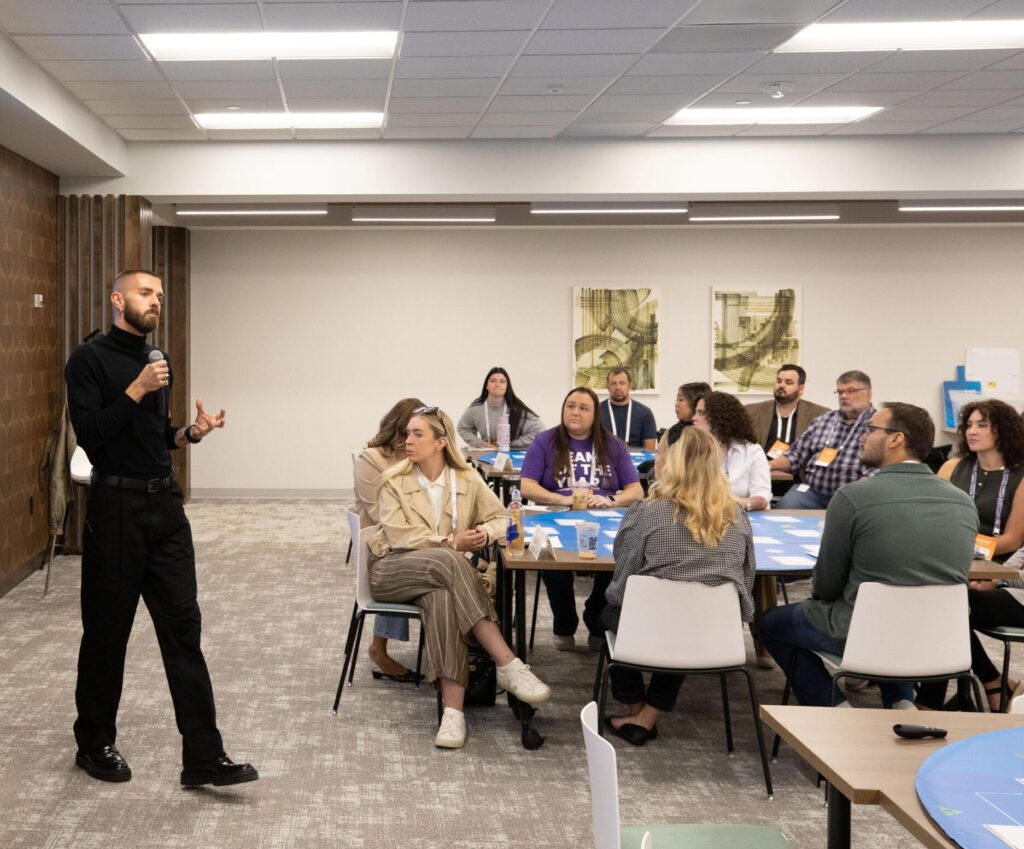I’ve been thinking a lot about how to foster innovation. The reason being, I don’t think innovation is an activity that belongs to a particular team, but more so a mindset that anyone can adopt at work.
Work is a series of opportunities and problems to be solved. Good solutions come from a creatively powerful place. Innovation is less about the solution, and more about enabling a creatively powerful place.
Perhaps the sticking point for innovation is that it leads to change, and we all know the resistance to change is real. So, how do you open up space for creativity and innovation when there is a natural defensive barrier protecting us from change that we don’t instinctively like?
Speaking from a leadership perspective, there are some thoughts we could consider if we want to shift innovation up a gear and invest in meaningful change. My idea is that these thoughts can be the driving force for our actions as leaders, and serve as a filter to make decisions about where to stop – as well as continue – investing our energy and resources.
Trust
If people aren’t used to taking ownership to innovate, it could feel daunting to step into a ‘creatively powerful place’. If we’re going to throw people in the deep end, we must trust a lot in them, and they must trust a lot in themselves.
- The evidence: I constantly think about myself relative to others. It’s not necessarily that I’m comparing myself or thinking of myself as inferior. What trips me up is second-guessing other people’s expectations and trying to live up to the standards I’ve imagined. The evidence suggests other people think like this too. McKinsey research discovered that “worries about failure, criticism and career impact hold many people back from embracing innovation”
- The solution: As a leader, I’m not sure the answer is to ‘make your expectations clear’, because that keeps leaders in a lane where they make the rules. I think it’s more about relentlessly building confidence in others. That starts by recognising you cannot change people, but you can give them the autonomy to try different approaches.
Story sharing
Storytelling is a phrase that gets used a lot in business and design, and I sometimes get lost in what that means (it’s not the Disney version, of that I’m sure), but I think story sharing – or connection through storytelling – is part of the answer when it comes to building confidence in others to innovate.
- The evidence: When I’m inspired by people I am interested in their process and story, and want to find out more. It’s how I find the confidence to take risks. The evidence suggests that others act on inspiration too.
- The solution: People want to know you and know that you believe in what you’re saying. If you’re leading, they’ll be curious about you. If you allow that connection, you convey realness and honesty in your story sharing rather than trying to sell a far-off vision that can seem a bit like empty business-speak.
Clear the path
As a leader, a measure of innovation is being replaced. If you stay too long, you might be failing. Failure isn’t a bad thing. It’s an opportunity to take a different path. The process of innovation means letting others in.
- The evidence: I’m not there yet. This thought is quite challenging because I value knowledge, financial security and all the things that make the idea of being replaced as challenging as it is liberating. But all the evidence suggests that individuals thrive when they are facilitated to share ideas and try new things (aka innovate). As they learn, they grow, which means you may have to step aside to avoid stagnation and clear the path.
- The solution: An innovation mindset demands looking beyond your four walls. Leaders are mostly shaping the future with their peers and the level below, along with a bit of upward engagement. While this is happening inside work, the outside world has probably moved on. The way to innovate is to facilitate – look outside for ideas and bring them in.
Final thoughts
I constantly think about what innovation at work means. What I am learning more and more is that I am better off facilitating innovation rather than seeking to define it or produce it. I know too that like every other leader, if I’m serious about contributing to a stronger future that is noticeably different from today, I will need to continuously, boldly and bravely revise my sense of what is possible.
